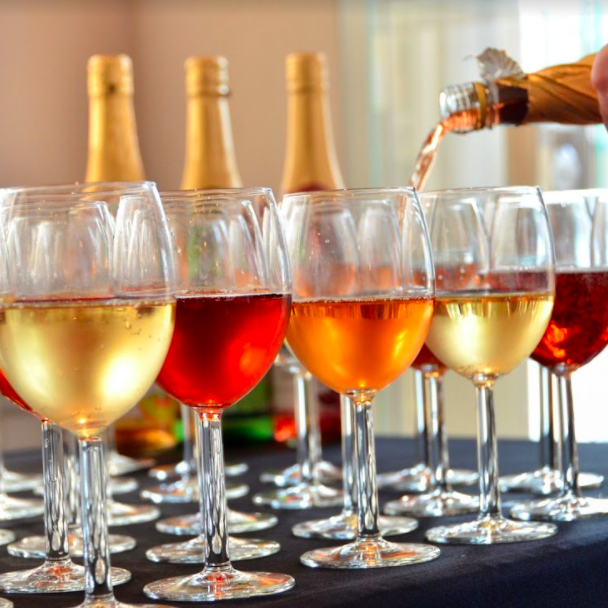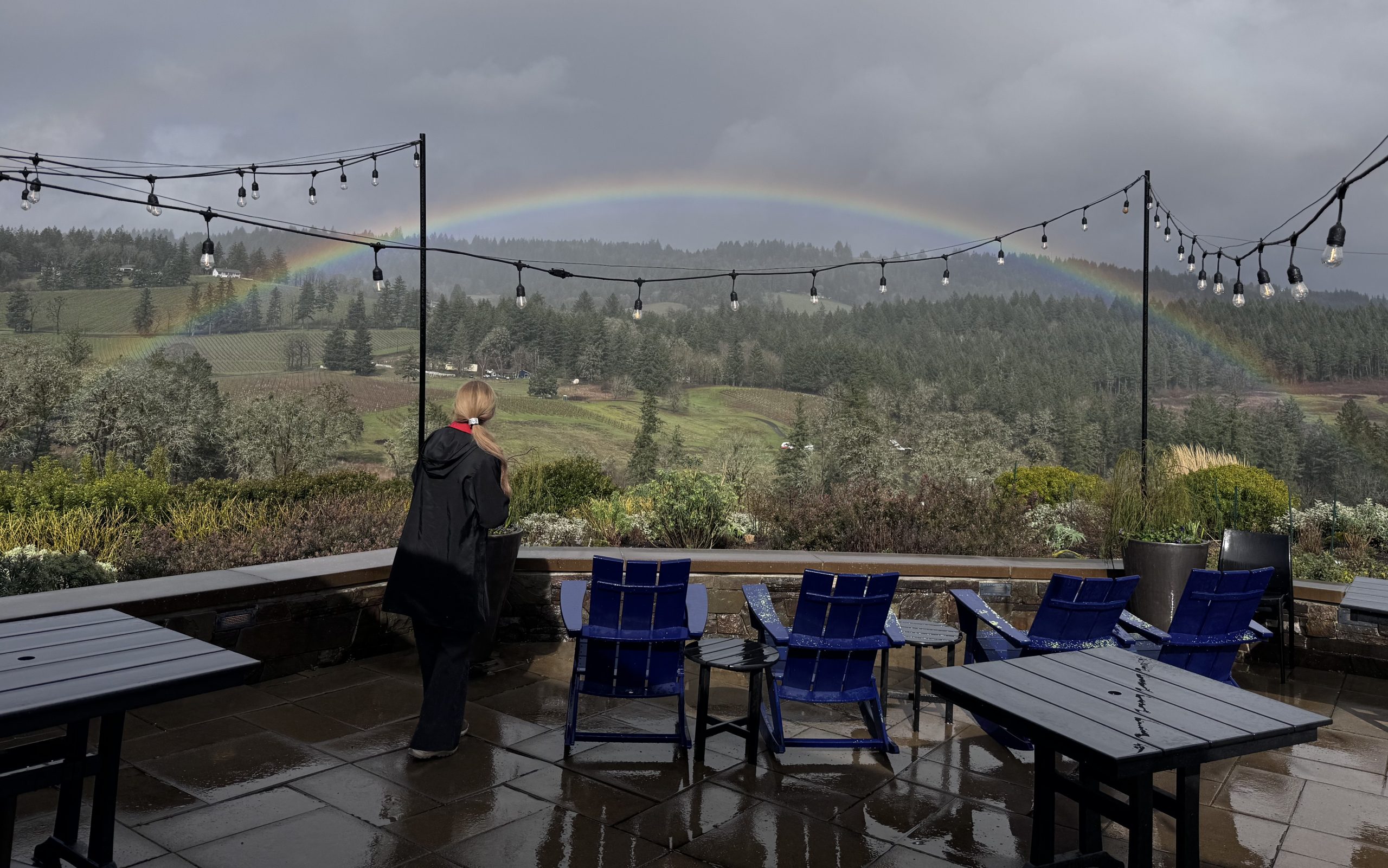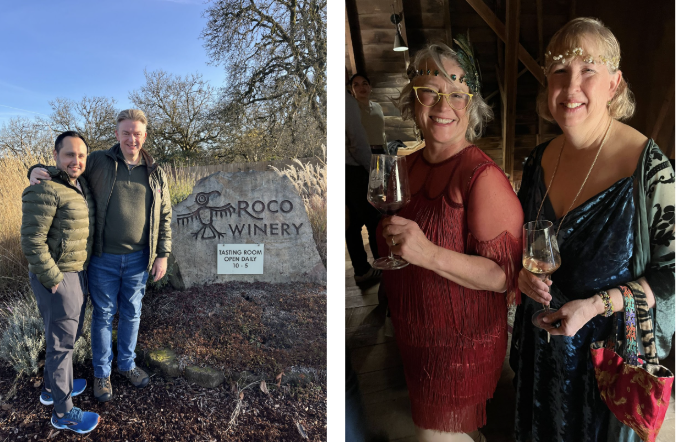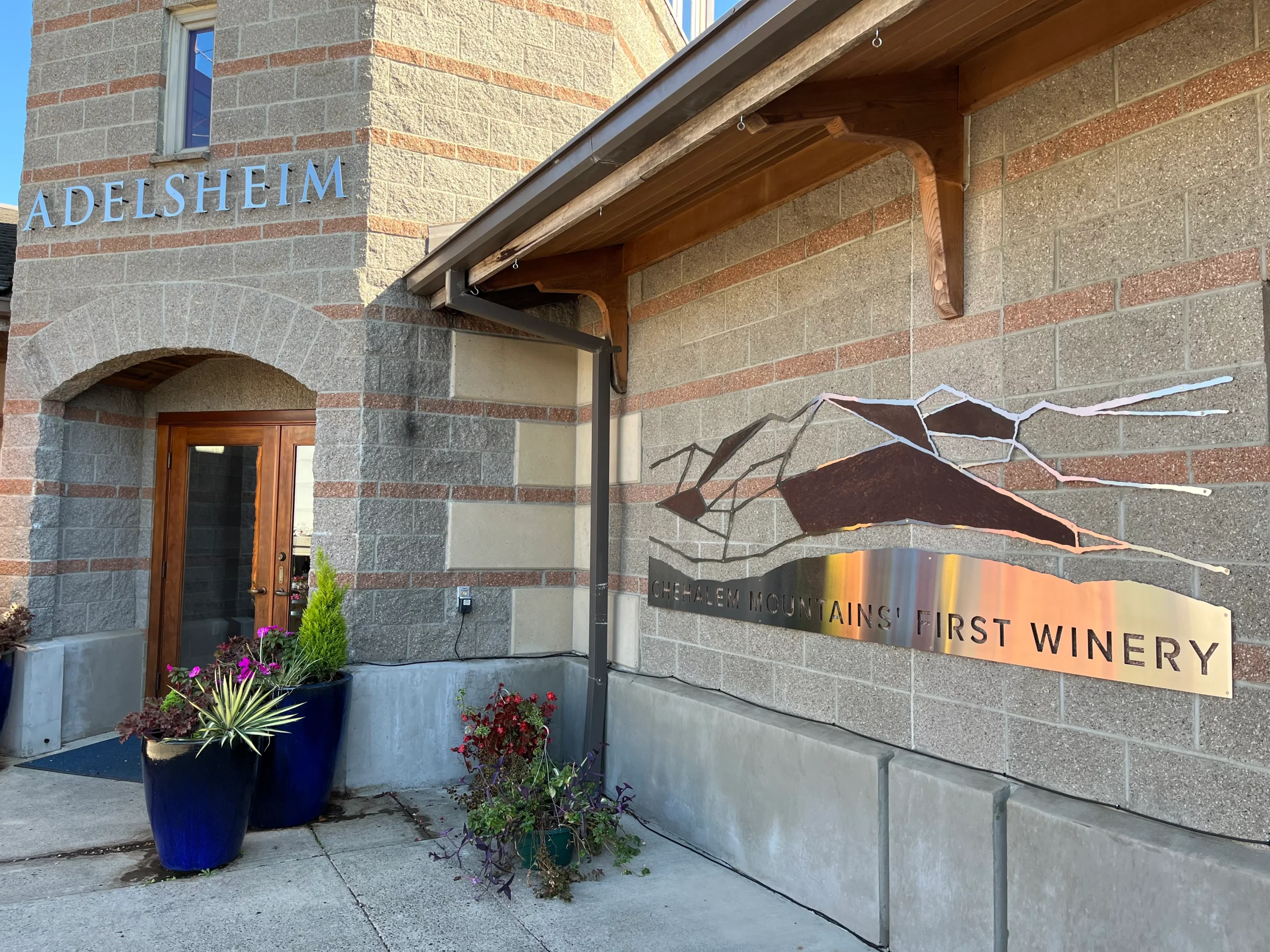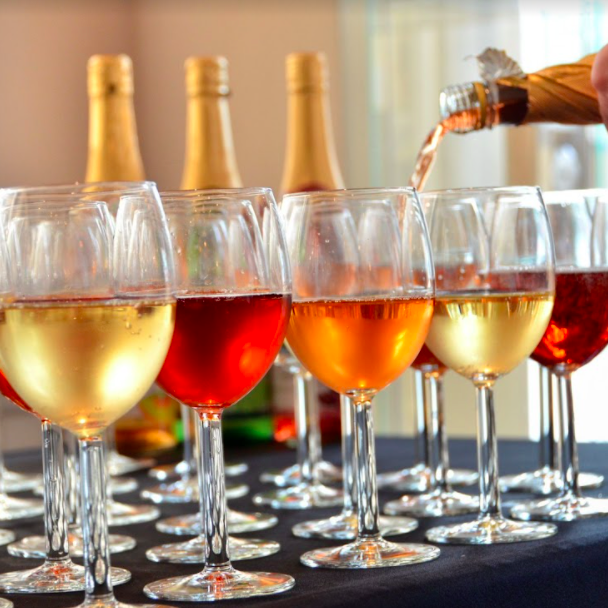
By popular demand (aka my daughter, the millennial) this blog post will be about grapes and wine types. Talking to her, I realized not everyone knows what makes a wine a white, red, rosé, etc. I wrote this blog post to help people understand how the color of a wine is determined. More specifically, I want to answer: what effect do grape skins have on wine in general and flavor/color in particular? The answer: a lot and a little. Additionally, can you judge quality based on color? Yes and no. Wine color comes from the skins. Grape juice from the innards of the grape berry is colorless or pale yellow; even red and black grapes have clear juice. The color, whether yellow, orange, red, or purple comes from the time the juice is left in contact with the skins after pressing.
Below I’ll break down how this process differs for each type of wine.

